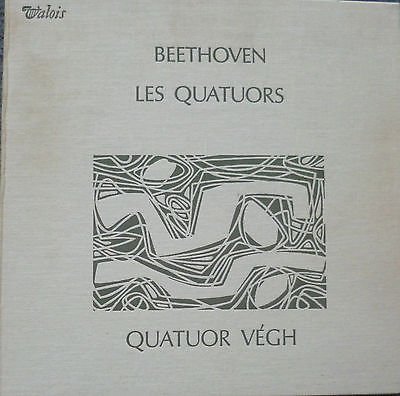The newer titles, Marvin Gaye and Crosby Stills and Nash, are still available brand new here in the UK for about £180-£185, so I am not likely to get that amount for them on Discogs (despite being near mint, cleaned in Degritter and only first side played). MFSL 1-305 was a limited release of I think 2000 pressings only (subsequent Ultradiscs being many more). I bought that for less (can't recall, but I think around £120) some years back when first released. My opinion of the sound? It didn't impress me, but then I am into pure analogue recordings from master tape using only valve amplification with very little pure analogue balancing and RIAA, but no digital processing. Anything other than that sounds lifeless to me, hence my reason for selling them.At loss? How much have you paid for your copy?BTW, what is your opinion on the GAIN 2 Ultra Analog 180g LP - MFSL 1-305?
The pure analogue LP purveyors, in order of excellence in presence
- Thread starter Rensselaer
- Start date
You are using an out of date browser. It may not display this or other websites correctly.
You should upgrade or use an alternative browser.
You should upgrade or use an alternative browser.
Unfortunately, by the time Salvatore Accardo started to record for Foné, he was already well past his prime.Analog productions even be embarrassed by simple old records, not necessarily collectibles, Classic records did reissues much better than AP.
Fone can sometimes have good sonics but very poor performances. Just buy that Paganini one which is a decent one from their stand.
The chaconne on Fone, even my whistling can outperform it.
Renssealer, Sir,
In my opinion the best value and excellent performances lie amongst the Decca narrowband presses from the sixties and seventies. Valois from the same era as well as Hungaroton up to the early nineties. Erato up to the nineties also.
Giuseppe Tartini, Pierre Amoyal, Susan Moses, Edoardo Farina - Tartini Sonates: 2xLP, Gat For Sale | Discogs
Tartini: Violin Sonata in G minor, Op1 No10 (Pierre Amoyal, violin) - YouTube
Wieland Kuijken, Sigiswald Kuijken, Robert Kohnen - Music For A Viol: LP, Gat For Sale | Discogs
No affiliation just great performances and the rest.
Kindest regards, G.
In my opinion the best value and excellent performances lie amongst the Decca narrowband presses from the sixties and seventies. Valois from the same era as well as Hungaroton up to the early nineties. Erato up to the nineties also.
Giuseppe Tartini, Pierre Amoyal, Susan Moses, Edoardo Farina - Tartini Sonates: 2xLP, Gat For Sale | Discogs
Tartini: Violin Sonata in G minor, Op1 No10 (Pierre Amoyal, violin) - YouTube
Wieland Kuijken, Sigiswald Kuijken, Robert Kohnen - Music For A Viol: LP, Gat For Sale | Discogs
No affiliation just great performances and the rest.
Kindest regards, G.
This is the one from the YouTube clip;
Tartini*, Bach*, Vivaldi*, Paganini*, Pierre Amoyal, Susan Moses, Edoardo Farina - Les Instruments Précieux Du Musée Du Conservatoire - Vol.2 - Les Violons: LP, Album, Gat For Sale | Discogs
Kindest regards, G.
Tartini*, Bach*, Vivaldi*, Paganini*, Pierre Amoyal, Susan Moses, Edoardo Farina - Les Instruments Précieux Du Musée Du Conservatoire - Vol.2 - Les Violons: LP, Album, Gat For Sale | Discogs
Kindest regards, G.
The newer titles, Marvin Gaye and Crosby Stills and Nash, are still available brand new here in the UK for about £180-£185, so I am not likely to get that amount for them on Discogs (despite being near mint, cleaned in Degritter and only first side played). MFSL 1-305 was a limited release of I think 2000 pressings only (subsequent Ultradiscs being many more). I bought that for less (can't recall, but I think around £120) some years back when first released. My opinion of the sound? It didn't impress me, but then I am into pure analogue recordings from master tape using only valve amplification with very little pure analogue balancing and RIAA, but no digital processing. Anything other than that sounds lifeless to me, hence my reason for selling them.
The Martin Gaye sold new in box for around $130 in 2019, long before the DSD event. Considering they are still available, IMO we should expect a mint, non sealed copy to sell for less than 50% of that price.
Considering the rave review online of Michael Fremer of this album I think that its value will raise again in a few years, after this MOFI crisis is forgotten.
Thanks for being so clear on your preference.
ERC has a policy of making very limited runs and no represses, making their reissues collectors items. If you look at their website, you will see that everything is sold out. I met the principals in the very early days (I knew one of them, Dave Parsons, who was a very high end used classical dealer in London and he took me over to the other's (Pete Hutchinson) studio when all the equipment was in still in pieces, awaiting restoration.) Because of Pete's connection with EMI, they were able to get the original master tapes. Dave formulated the initial list of titles (which he shared with me) only had EMI classical recordings, including the super expensive Martzy, Kogan, Oistrakh, etc. albums. Most of those never ended up being issued. This was way before any thought of non classical titles. A few years later, they had to renegotiate their licensing deal after EMI Classical was bought by Warner, and that went easier than they thought. I haven't kept in touch in quite a few years.ERC looks to be exactly what I was searching for, thank you for the referral.
Larry
If you want the very best analog sound that vinyl can offer, in my long experience there’s no beating the sound of true mono vinyl records played on a true mono cartridge. I have the Miyajima Zero Infinity, a beast of a cartridge that can only play back mono records as it only reproduced lateral groove modulations. Freed of the need to produce vertical “fake stereo“ modulation, mono vinyl to my ears sounds glorious in a way stereo vinyl never can. Thankfully the greatest jazz, folk, popular, country, and rock and roll artists from the 1920s-1965 all recorded in mono, so there’s an enormous range of great music to choose from. I keep multiple turntables at home, but the very best sound I get is from my mono only turntable, a fully restored Garrard 301 designed for mono records with the Miyajima Zero in an SME 12” arm. After listening to the truly stupendous dynamics of The Beatles or Elvis Presley in mono, or the sound of Lester Young or John Coltrane in mono, stereo comes across as a pale sickly child.
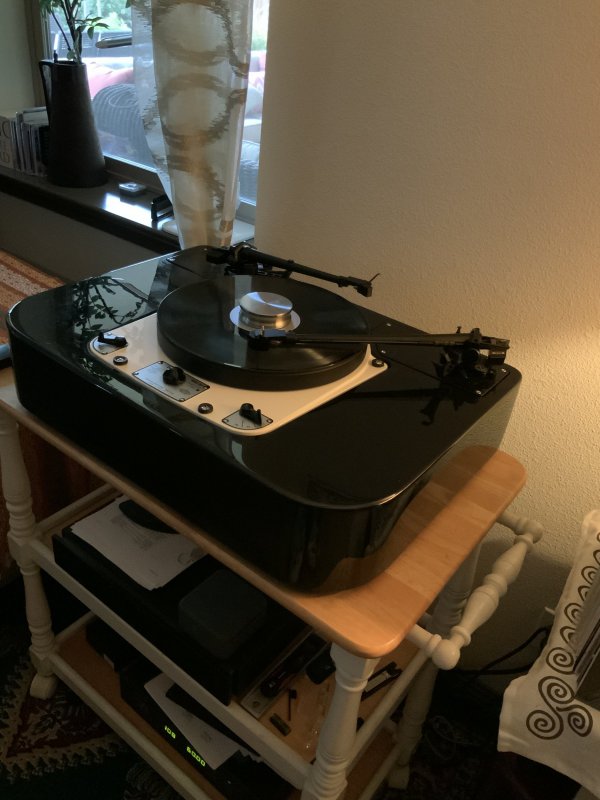

I had bought the music for a viol after listening at G's some 3- 4 years ago, and The Pierre Amoyal Susan Moses etc have a different one from Erato that is excellent, but more expensive at 140 quid or so.
Would you kindly tell me what SUT/Phono-stage you are using with your Miyajima Zero, and does it output through a Y cannection to left and right amplifier RCA inputs?If you want the very best analog sound that vinyl can offer, in my long experience there’s no beating the sound of true mono vinyl records played on a true mono cartridge. I have the Miyajima Zero Infinity, a beast of a cartridge that can only play back mono records as it only reproduced lateral groove modulations. Freed of the need to produce vertical “fake stereo“ modulation, mono vinyl to my ears sounds glorious in a way stereo vinyl never can. Thankfully the greatest jazz, folk, popular, country, and rock and roll artists from the 1920s-1965 all recorded in mono, so there’s an enormous range of great music to choose from. I keep multiple turntables at home, but the very best sound I get is from my mono only turntable, a fully restored Garrard 301 designed for mono records with the Miyajima Zero in an SME 12” arm. After listening to the truly stupendous dynamics of The Beatles or Elvis Presley in mono, or the sound of Lester Young or John Coltrane in mono, stereo comes across as a pale sickly child.
View attachment 103560
Would you kindly tell me what SUT/Phono-stage you are using with your Miyajima Zero, and does it output through a Y cannection to left and right amplifier RCA inputs?
I like the discussion about analog records. Can I politely suggest we not turn the thread into a hardware discussion?
to get back on topic.
I believe the above requirement excludes anything that had been cut on a Neumann cutting lathe without the MT-75 or similar console since the preview to set the groove pitch is analog but then the signal is digitally delayed and then fed to the cutterhead. The MT75 has a preview head equipped Telefunken M15A does this delay in the analog domain by using dual heads (preview/cut) spaced the appropriate distance apart for the required tape speed. The Ortofon-Lyrec combo in the video below also keeps it all in the analog domain by the same method.
no digital mastering what-so-ever
I believe the above requirement excludes anything that had been cut on a Neumann cutting lathe without the MT-75 or similar console since the preview to set the groove pitch is analog but then the signal is digitally delayed and then fed to the cutterhead. The MT75 has a preview head equipped Telefunken M15A does this delay in the analog domain by using dual heads (preview/cut) spaced the appropriate distance apart for the required tape speed. The Ortofon-Lyrec combo in the video below also keeps it all in the analog domain by the same method.
The L'Oiseau-Lyre Florilegium changed in about 1982/3 to digital recordings on DSDL 700 series.LPs on the Lyrita label are old enough to be all analog. Mostly British music.
The Argo and L'Oiseau-Lyre labels should be all analog as long as they are not a re-press. All are european
One way to look: does it have a bar code? That's not guaranteed.
All earlier ones look to be all analog. The front covers are marked:
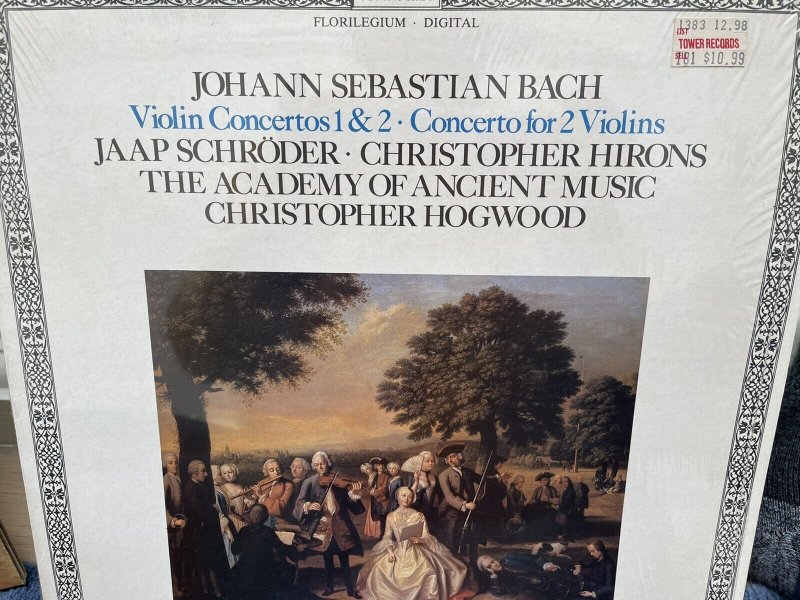
Analogphonic is doing reissues in all analog mastering from analog master tapes.
Speakers Corner reissues are all analog, details here: Speakers Corner info
Craft Recordings also looks like it is putting out reissues from an all analog chain.
And of course, most any LP pressed prior to 1980-ish.
Speakers Corner reissues are all analog, details here: Speakers Corner info
Craft Recordings also looks like it is putting out reissues from an all analog chain.
And of course, most any LP pressed prior to 1980-ish.
That is a little bit misleading/misinforming. I’ll skip commenting on ERC.to get back on topic.
I believe the above requirement excludes anything that had been cut on a Neumann cutting lathe without the MT-75 or similar console since the preview to set the groove pitch is analog but then the signal is digitally delayed and then fed to the cutterhead. The MT75 has a preview head equipped Telefunken M15A does this delay in the analog domain by using dual heads (preview/cut) spaced the appropriate distance apart for the required tape speed. The Ortofon-Lyrec combo in the video below also keeps it all in the analog domain by the same method.
Besides Telefunken, companies like Studer, Ampex and MCI all offered tape machines with preview head. There are also other brands like Scully that offered tape machines with preview head but they’re not widely used. All of those tape machines that have preview head are adjusted for required delay for appropriate lathe/lathes.
A preview head is located physically before the actual head and feds the computer for upcoming signal. The actual head feds the cutterhead. This all happens in analog and no digital is involved. If you have a tape machine with a preview head then there is no need for a digital delay cause you already have it physically.
For the time being famous mastering facilities that are using Neumann VMS 70 lathe and SX-74 cutterhead either own a Studer A80, MCI JH-110 or other tape machine with a preview head. Preview head helps the analogue computer in lathe at determining pitch and depth of the groove for maximizing useable area on the fly.
KG uses VMS 70 lathe and Studer A80 tape. They both have 0.6 delay so no problem on cutting all analog.
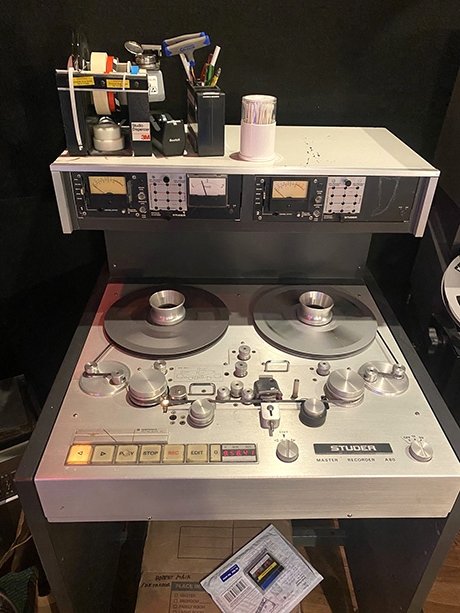
Neumann’s later model the VMS 80 requires 0.5 delay and both Studer and MCI have adopted to new specification when VMS 80 released and offered modified versions. Sterling uses a modified ATR 102 tape machine with an added preview head for VMS 80 lathe at 0.5 delay so they can cut all analog.
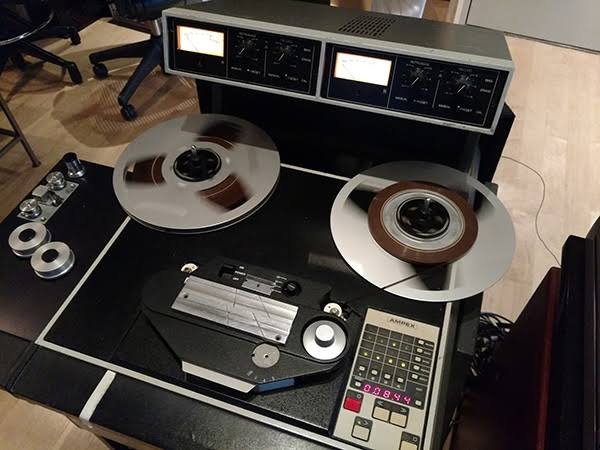
TML used to own Scully and Neumann lathes together with MCI tape machine with preview head AFAIK.
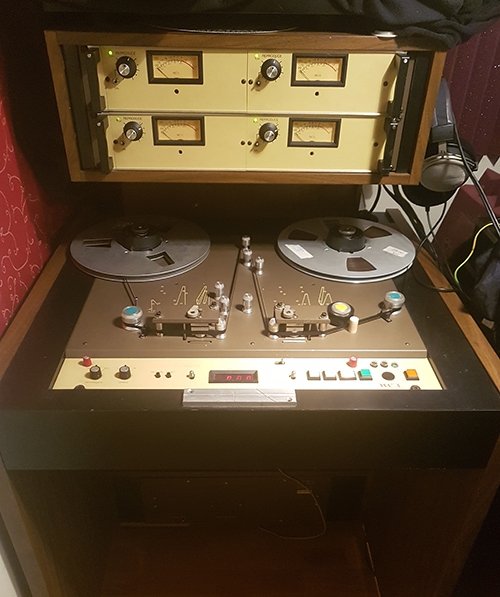
BG uses Scully lathes with Neumann SX-74 cutterhead (I believe he also has Westrex 3D). Scully lathes require 1.0 delay but lathes at BG are highly modified and can be used with Studer A80 instead of Scully 280 or Ampex 300 tape machines. Again all analog
You’re right about the existence of digital delay. It was used back in the day by some mastering engineers which don’t have tape machines with preview head or arranged for different delay. Another limitation is not obtaining the master tapes. Digital delay is used only after the arrival of digital era and I’m sure it’s still in use by some engineers but not by any of the respectable mastering facilities.
Last edited:
Analogphonic is doing reissues in all analog mastering from analog master tapes.
Speakers Corner reissues are all analog, details here: Speakers Corner info
Craft Recordings also looks like it is putting out reissues from an all analog chain.
And of course, most any LP pressed prior to 1980-ish.
Analogphonic doesn’t do all, only some
See vinyl forum, “Craft ( Small Batch, One-step Pressings) “ #1, I forgot about this earlier thread when I posted it.
Analogphonic is doing reissues in all analog mastering from analog master tapes.
Speakers Corner reissues are all analog, details here: Speakers Corner info
Craft Recordings also looks like it is putting out reissues from an all analog chain.
And of course, most any LP pressed prior to 1980-ish.
The Analogphonic Mahler later Bernstein cycle is digital. Among re-issues, one of the better ones, imo.
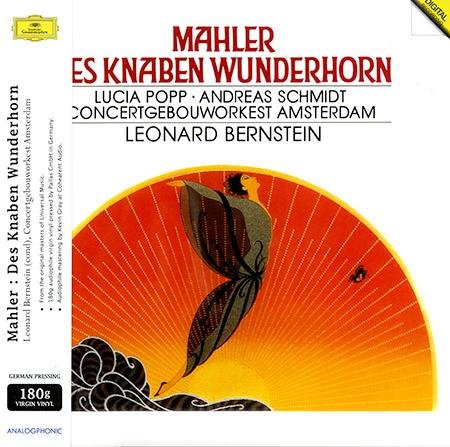
The Analogphonic Bruckner 7th is digital.
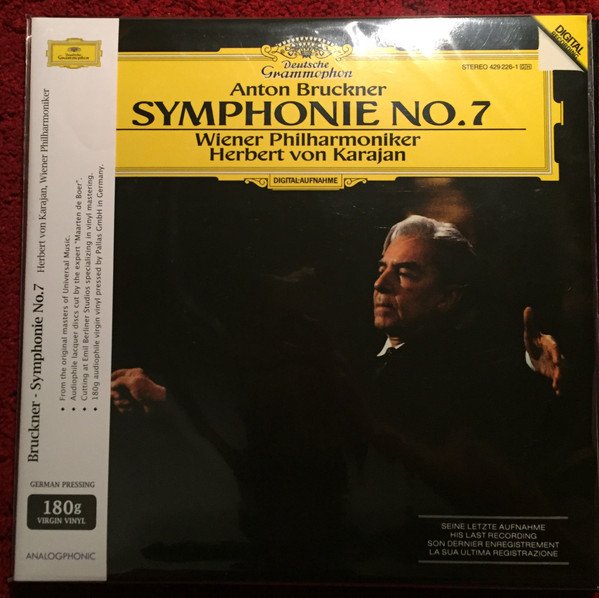
edit: but not all Analogphonic are digital.
Last edited:
I see that the two examples of Analogphonic you included are digital but your post-script that "not all Analogphonic are digital, so I sent an email to Speakers Corner asking for clarification as to which in their holdings is, and which isn't.The Analogphonic Mahler later Bernstein cycle is digital. Among re-issues, one of the better ones, imo.
View attachment 112860
The Analogphonic Bruckner 7th is digital.
View attachment 112864
edit: but not all Analogphonic are digital.
The Speakers Corner website page on analogue recording lists their cutting engineers so I read under the most well known, Kevin Gray. His bio says he is responsible for all their Warner Music (Asylum, Atlantic, ATCO, Reprise, STAX, and Warner) as well as the Columbia Masterworks.
From Wikipedia I see that Sony (Music, Publishing, etc) owns Warner (and with that Asylum, Atlantic, ATCO, Reprise and STAX) as well as Columbia (including Masterworks). They also own RCA, Epic, Arista and all the rights to every entertainer and song contracted under those labels. We should by know all be aware of the law suit filed by Stephen J. Tuttle, et al., against Music Direct for selling MoFi 45RPM UltraDisc One-Step records as being only one-step analogue recordings when in fact they were all cut from digital files. If you look these records up on Discogs, you will see that in addition to their Mobile Fidelity designation, they will have additional designations that can be traced back to Sony either directly or indirectly (Santana Abraxas, MoFi UD1S 2-001 is also designated Sony Music 88889724611, and Columbia 88889724611; CS&N is MoFi UD1S 2-021 as well as Atlantic UD1S 2-021, as stated above Columbia, and Atlantic belong to Sony).
I remember seeing Chad Kassem (Acoustic Sounds/Analogue Productions) on a video somewhere (YouTube?) saying he was offered a lot of money (from whom he did not say, but I suspect Sony) to press a record on his label from a digital file they had mastered from the original analogue tape. According to Wikipedia, Sony owns the rights to over 5-million songs. Most records today are pressed from digital masters (it is easier, cheaper, and there is no limit on how many times a digital master can be used). I can't help wondering however if Sony, the inventor of the CD, and who was involved in the BetaMax/VHS format wars, is trying to rid us of better-sounding pure-analogue recordings in order to fully monopolise the market. If surface noise is the only difference in sound between a vinyl recording and a CD then why buy anything but CD's?
Similar threads
- Replies
- 0
- Views
- 946
- Replies
- 16
- Views
- 10K
- Replies
- 41
- Views
- 11K
- Replies
- 1
- Views
- 3K
| Steve Williams Site Founder | Site Owner | Administrator | Ron Resnick Site Owner | Administrator | Julian (The Fixer) Website Build | Marketing Managersing |







